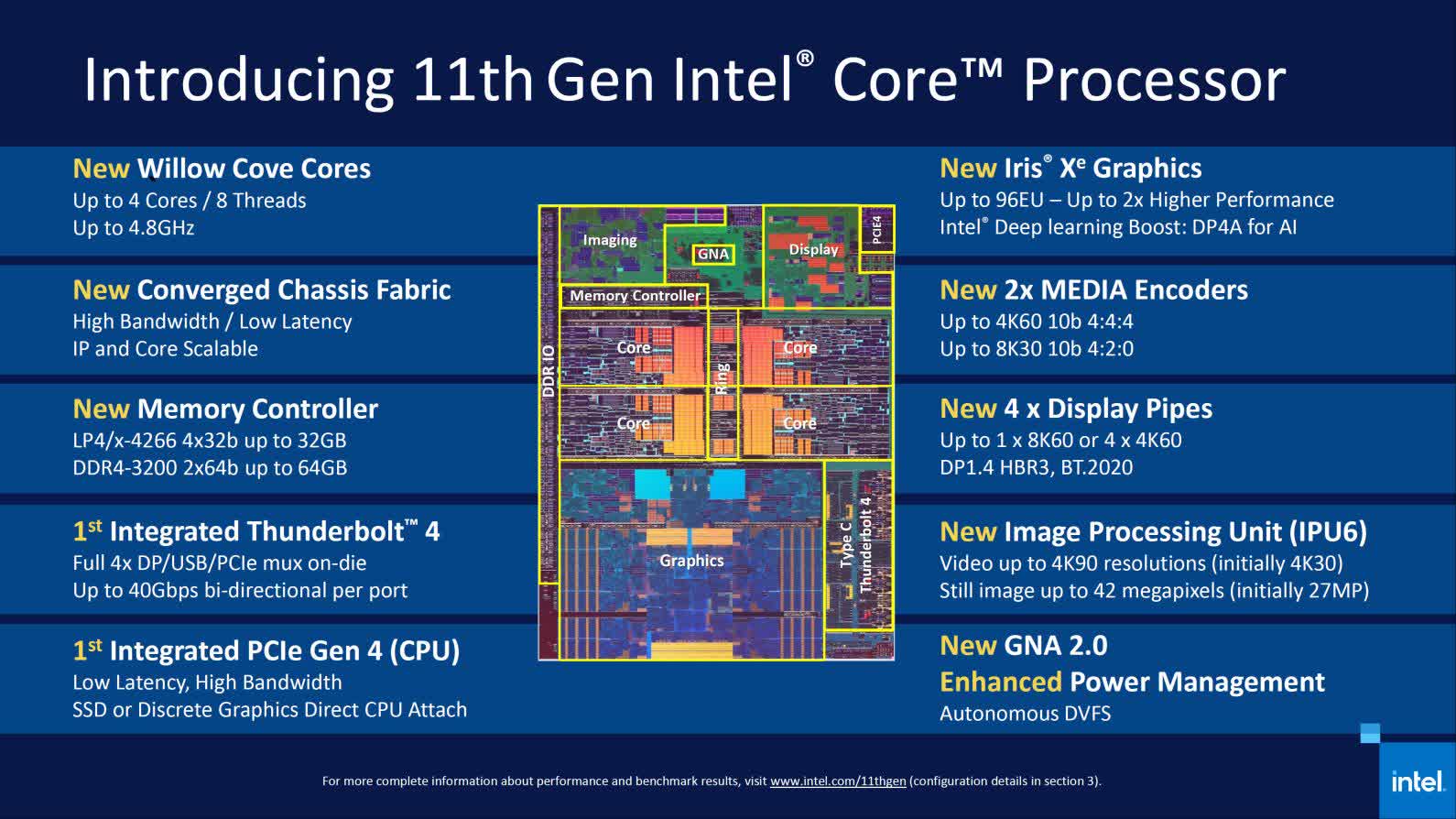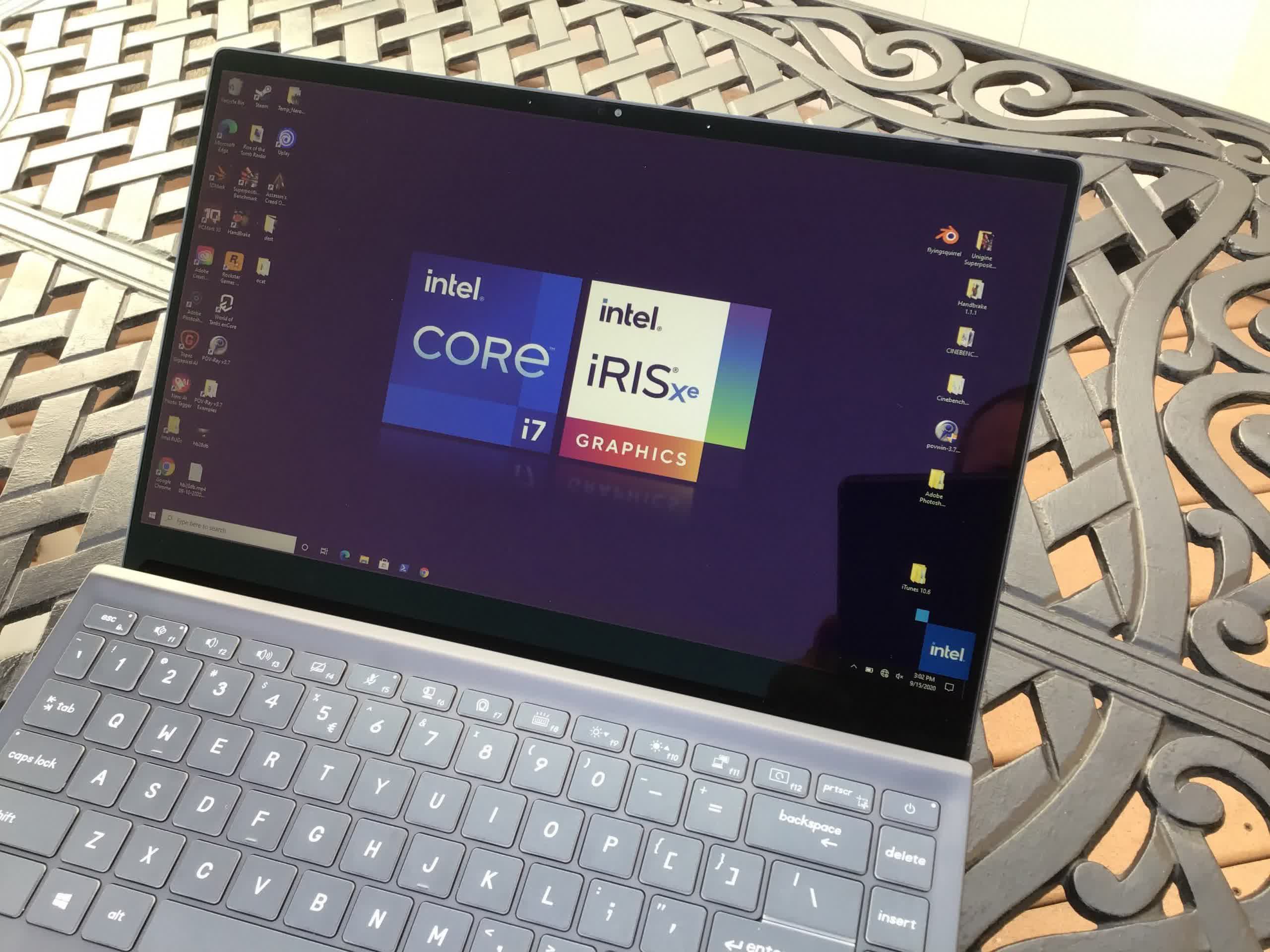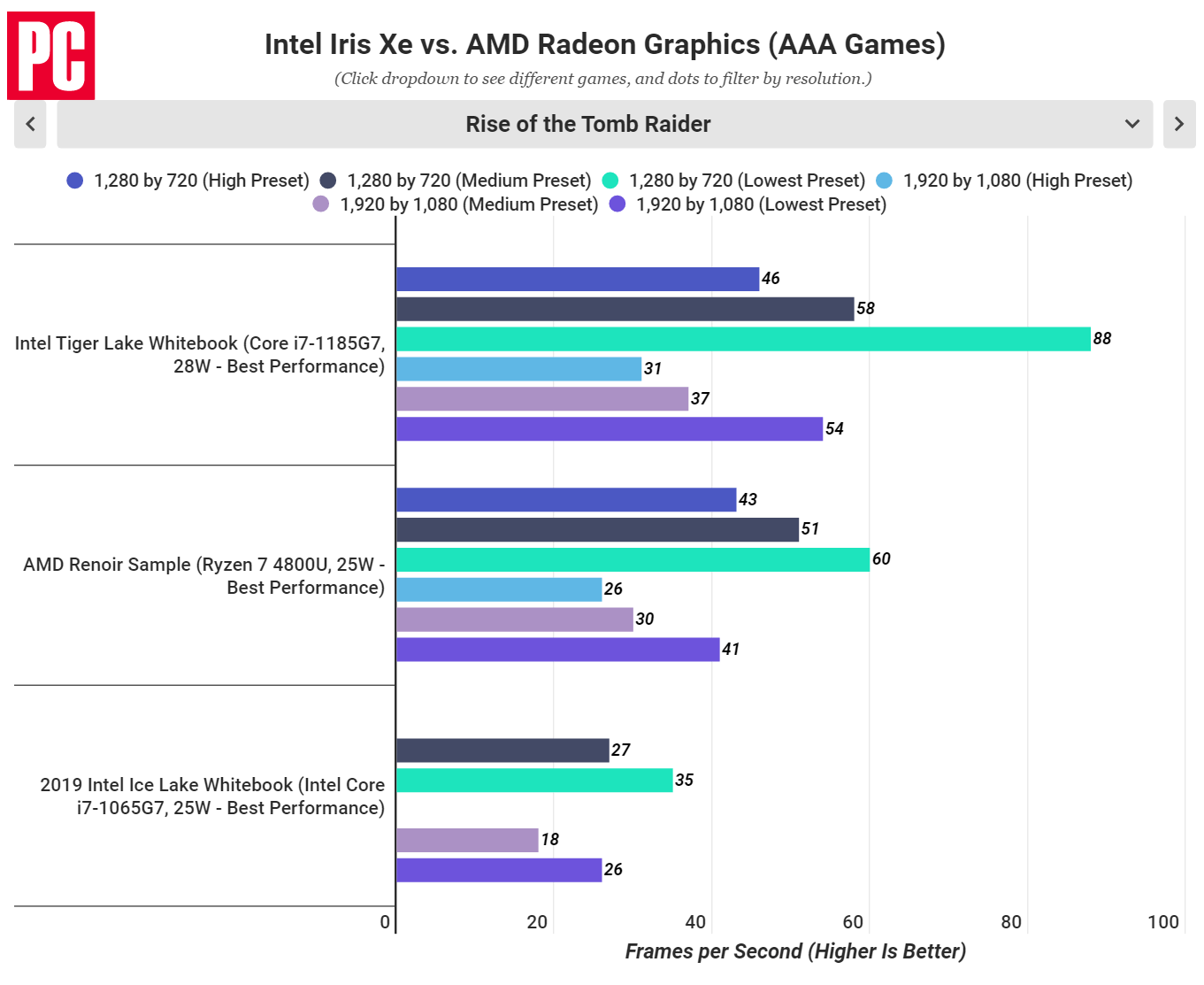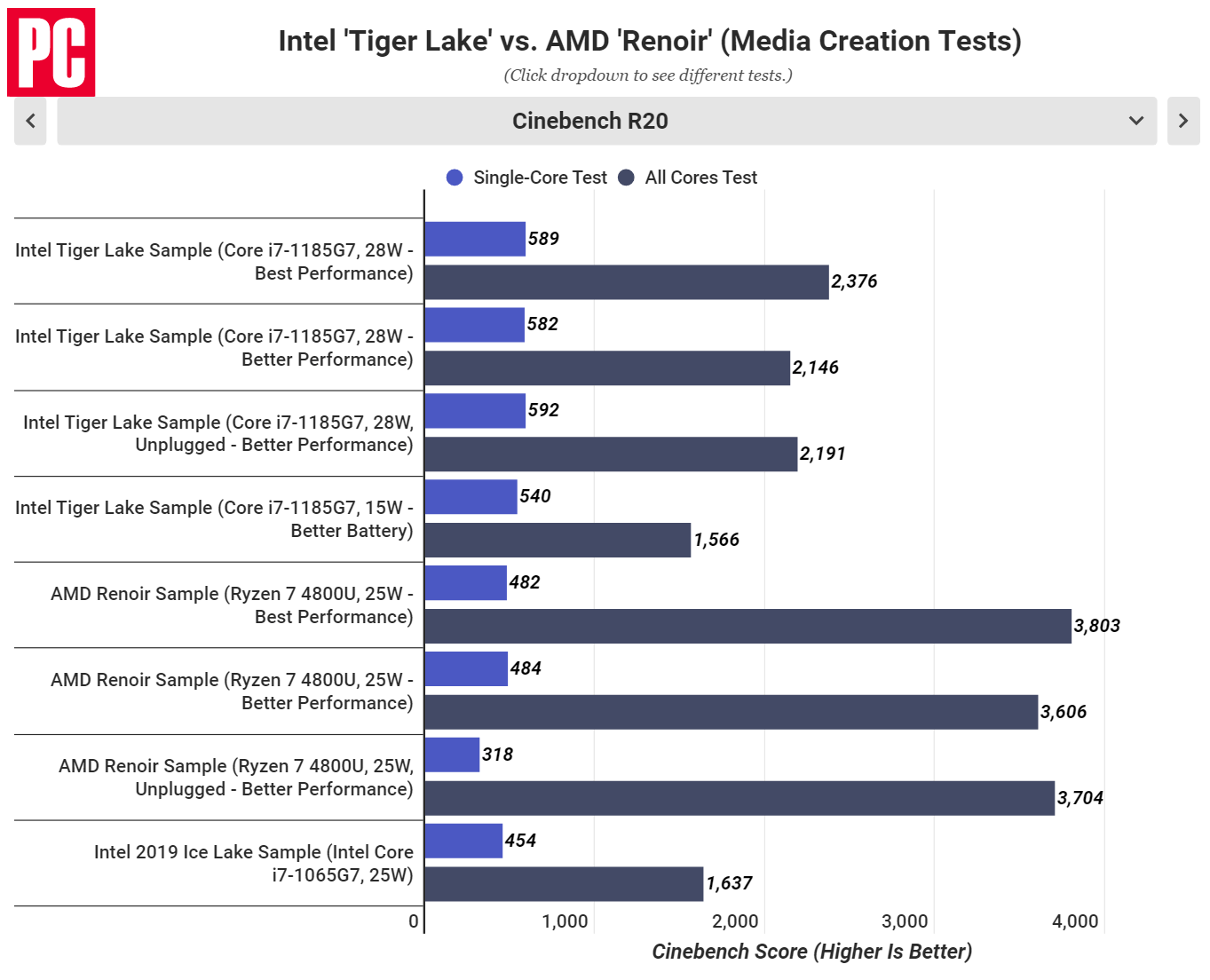Something to look forward to: Intel has been having a hard time squeezing every bit of performance possible out of their older CPU architectures to remain in contention. Considering how aggressive AMD has been, you could arguably say they've done a good job keeping afloat, whether it's on servers, desktop or laptops. But they could only hang on for so long. Tiger Lake and Xe is how Intel is beginning to strike back.

For the past year Ryzen has clearly dominated desktop CPU buying recommendations, on the server side AMD Epyc has gained ground, but on laptops Intel went unchallenged until just recently. They appear to be ready to strike back there first with its 11th-gen Core "Tiger Lake" processors.
The new line of silicon features Iris Xe graphics and uses Intel's latest 10nm "SuperFin" process. Tiger Lake is aimed at thin-and-light laptops because they offer higher performance with better power efficiency. Intel also claims to outperform AMD's Ryzen 7 4800U which we tested recently and is darn good. We'll eventually review Tiger Lake ourselves but laptops equipped with the chip are not expected to go on sale for another month or so.

In the meantime, a small number of publications have received a pre-production Tiger Lake laptop equipped with their top-of-the-line Core i7-1185G7 for a preliminary performance overview. Here are some takeaways from PCMag's testing which compared the laptop against AMD's Ryzen 4000 "Renoir" to determine where each laptop CPU shines on performance:
- Tiger Lake is faster than Ryzen 'Renoir' on integrated graphics, thanks to next generation Iris Xe.
- This is the first instance of Intel's Iris Xe, their new generation graphics. Thanks to it, some proper PC gaming is possible, with caveats.
- Lighter tasks = no problem. Because both of these are "low-power" chips destined for thin, light, and stylish ultraportable laptops, the idea is that they will be used mostly for lighter tasks, such as video conferencing and web browsing. On those types of workflows, PCMag tests suggest that Tiger Lake can be as good as Renoir.
- Gaming performance: Many popular, demanding games look like they may well be nicely playable on a Tiger Lake Core i7 in a full-wattage implementation. They might well be playable on the equivalent Renoir Ryzen 7, as well, but the amount of playability "wiggle room" will be less.

- Not better than a gaming laptop. The integrated graphics solutions on neither of these chips can hold a candle to the far-more-powerful discrete GPUs that power gaming laptops.
- Pure media processing: Running Cinebench and Handbrake, there’s a clear winner: Ryzen 7. The Ryzen 7 is better on Cinebench almost entirely thanks to its additional cores and threads. Tiger Lake however does well in those same tests when benchmarking single-core performance.
- On Adobe Photoshop, with slightly more graphics muscle and high clocks that come to the fore in this "bursty" test, the Core i7 performed slightly better than the Ryzen 7 did.

- Intel "AI-assisted workflows." Intel’s AI wizardry got a quad-core Core i7 to outperform a Ryzen 7 with more advanced silicon and twice as many cores.
You can head to PCMag's full article for more graphs and details. Tom's Hardware also received and tested the same Intel reference Tiger Lake laptop, for more data.
https://www.techspot.com/news/86792-intel-offers-tiger-lake-core-i7-1185g7-laptop.html